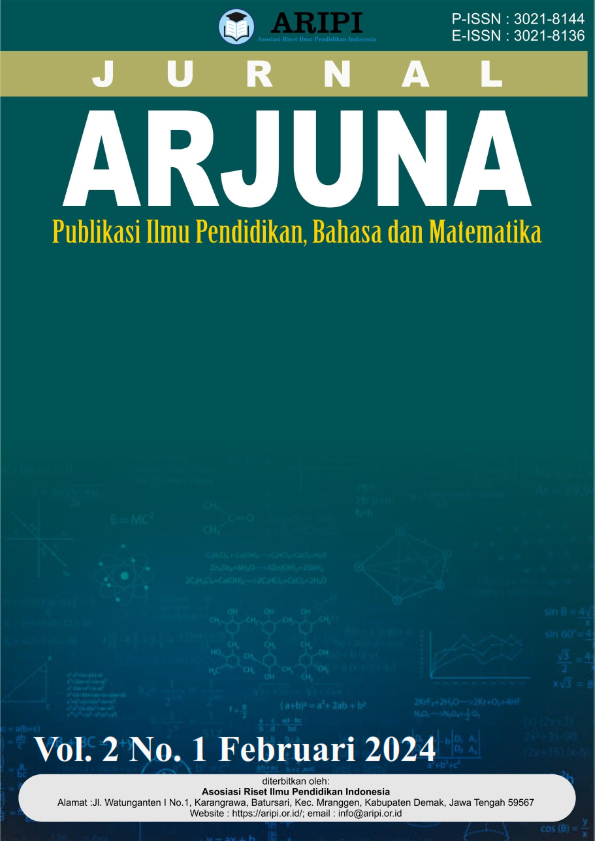Miskonsepsi Pemahaman Materi Bangun Datar Dengan Penerapan Teori Polya di PGMI 3 UINSU
DOI:
https://doi.org/10.61132/arjuna.v2i1.520Keywords:
Misconceptions, Flat Figures, Polya TheoryAbstract
Students' lack of understanding of a concept is usually called a misconception. This research aims to determine misconceptions about understanding plane material by applying polya theory at PGMI 3 State Islamic University of North Sumatra. The subjects in this research were 4 PGMI 3 UINSU students. The type of research used is qualitative descriptive research. Data collection in this research was carried out using observation and test methods. The results of the research showed that there were student misconceptions in working on plane material problems with the application of polya theory, including: misconceptions about signs and misconceptions about work procedures. This misconception occurs because students are not careful and do not understand the concepts in working on flat shapes using polya theory.
Downloads
References
Fatqurhohman. (2010). Pemahaman Konsep Matematika Siswa Dalam Menyelesaikan Masalah Bangun Datar. Jurnal Ilmiah Pendidikan Matematika, 4(2009), 127–133.
Irawan, E. (2021). Deteksi Miskonsepsi di Era Pandemi. Zahir Publishing.
Johar, R. (n.d.). Miskonsepsi_Siswa_Sekolah_Dasar_Pada_Pembelajaran_. 160–167.
Nuraeni, R., Ardiansyah, S. G., & Zanthy, L. S. (2020). Permasalahan matematika aritmatika sosial dalam bentuk cerita: bagaimana deskripsi kesalahan-kesalahan jawaban siswa? Teorema : Teori Dan Riset Matematika, 5(1), 61–68.
Purwaningrum, J. P., & Bintoro, H. S. (2018). Miskonsepsi matematika materi bilangan pada mahasiswa calon guru sekolah dasar. Prosiding Seminar Nasional MIPA 2018, November 2018, 173–180.
Rohmah, M. (2023). Analisis Faktor-faktor Penyebab Miskonsepsi. UTILITY: Jurnal Ilmiah Pendidikan Dan Ekonomi, 7(2), 39–47.
S. Christine Wulandari. (2017). Menanamkan Konsep Bentuk Geometri (Bangun Datar). Jurnal Pengabdian Masyarakat Ipteks, 3(1), 1–8.
Sugiyono. (2016). Metode Penelitian Kuantitatif Kualitatif dan R&D (p. 62).
Downloads
Published
How to Cite
Issue
Section
License
Copyright (c) 2023 Jurnal Arjuna : Publikasi Ilmu Pendidikan, Bahasa dan Matematika

This work is licensed under a Creative Commons Attribution-ShareAlike 4.0 International License.






